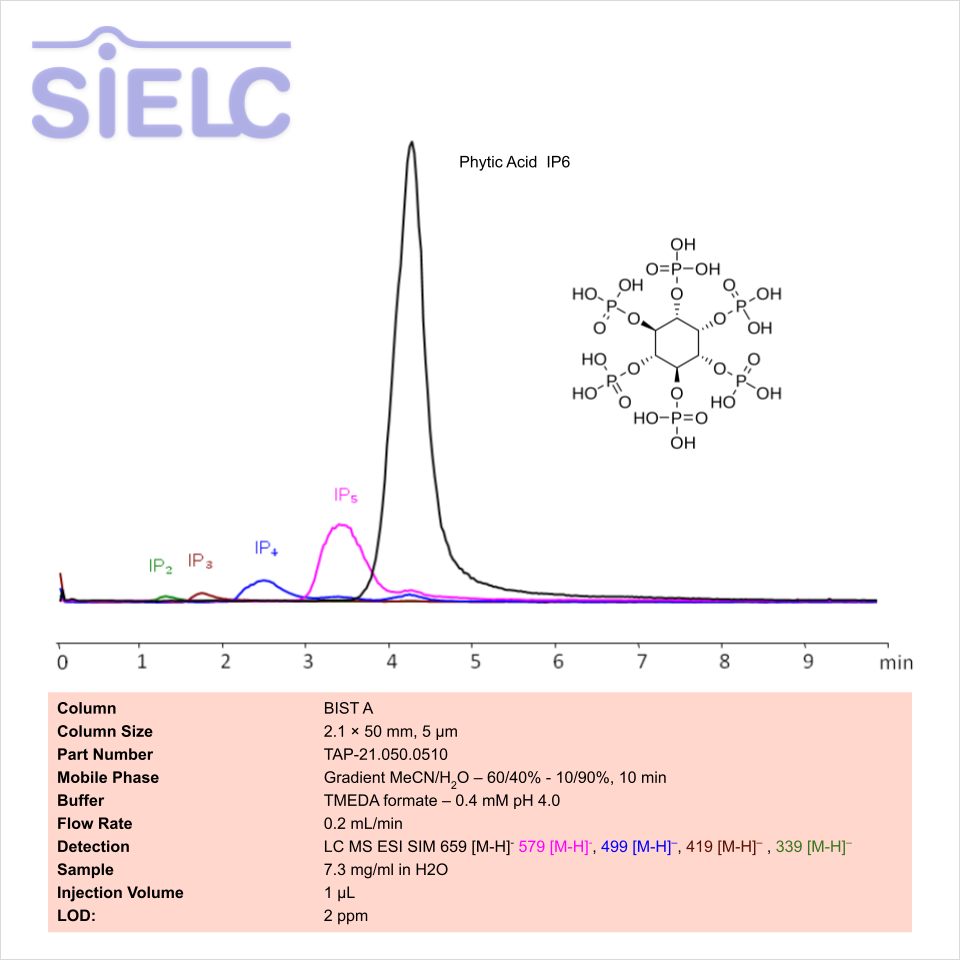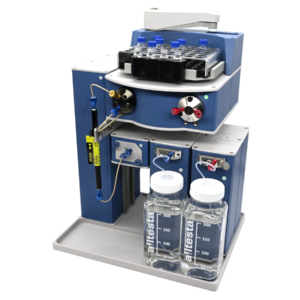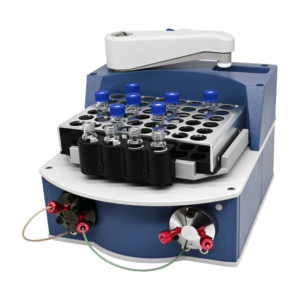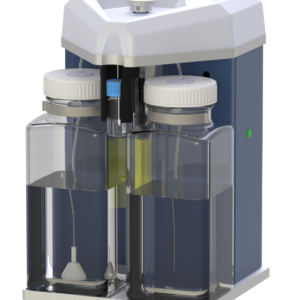HPLC Method for Phytic Acid on BIST A by SIELC Technologies
High Performance Liquid Chromatography (HPLC) Method for Analysis of Phytic Acid
Phytic Acid, also known as inositol hexaphosphate, inositol hexakisphosphate (IP6), AND inositol polyphosphate is a dihydrogenphosphate ester of inositol with the molecular formula C6H18O24P6. It is also known as a phosphorus-storage compounds primarily found in nuts, seeds, and whole grains. It serves as a way for plants to store phosphorus. When broken down in the body, it binds to chelates.
Phytic Acid can be retained and analyzed using the BIST A stationary phase column. The analysis utilizes a gradient method with a simple mobile phase consisting of water and acetonitrile (MeCN). Detection is performed using UV.
| Column | BIST A, 2.1 x 50 mm, 5 µm, 100 A, dual ended |
| Mobile Phase | Gradient MeCN – 60/40% – 10/90%, 10 min |
| Buffer | TMEDA formate |
| Flow Rate | 0.2 mL/min |
| Detection | LC MS ESI SIM |
| LOD* UV | 2 ppm |
| Class of Compounds | Ester |
| Analyzing Compounds | Phytic Acid |
Application Column
BIST A
Column Diameter: 2.1 mm
Column Length: 50 mm
Particle Size: 5 µm
Pore Size: 100 A
Column options: dual ended






